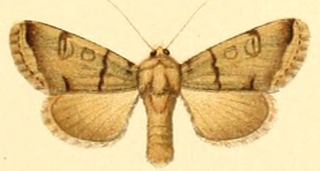
First Communion is a ceremony in some Christian traditions during which a person first receives the Eucharist. It is most common in the Latin Church tradition of the Catholic Church, as well as in many parts of the Lutheran Church and Anglican Communion. In churches that celebrate First Communion, it typically occurs between the ages of seven and thirteen, often acting as a rite of passage.
Frequent Communion is the Roman Catholic practice of receiving the Eucharist frequently, as opposed to the usual medieval practice of receiving it once or a few times a year, by going to mass on Sundays. Pope Pius X pushed for the practice of frequent communion, relaxing restrictions on reception for the sick and children.

The equatorial greytail is a species of bird in the Furnariidae family. It is found in Ecuador and Peru. Its natural habitat is subtropical or tropical moist montane forests. It is threatened by habitat loss.
The invincible ignorance fallacy is a deductive fallacy of circularity where the person in question simply refuses to believe the argument, ignoring any evidence given. It is not so much a fallacious tactic in argument as it is a refusal to argue in the proper sense of the word, the method instead being to either make assertions with no consideration of objections or to simply dismiss objections by calling them excuses, conjecture, etc. or saying that they are proof of nothing; all without actually demonstrating how the objection fit these terms.

Dichagyris singularis is a moth of the family Noctuidae. It is found from Turkmenistan to south-eastern Turkey, parts of the Middle East, Jordan, Israel, Iran and Afghanistan.
Cuspivolva singularis is a species of sea snail, a marine gastropod mollusk in the family Ovulidae, the ovulids, cowry allies or false cowries.
Copelatus singularis is a species of diving beetle. It is part of the subfamily Copelatinae in the family Dytiscidae. It was described by Bilardo & Rocchi in 1995.
Astathini is a tribe of longhorn beetles of the subfamily Lamiinae. It was described by Thomson in 1864.
Momisis is a genus of longhorn beetles of the subfamily Lamiinae.

Eunicella singularis, the white gorgonian, is a species of colonial soft coral, a sea fan in the family Gorgoniidae. It is found in the western Mediterranean Sea and the Adriatic Sea. It was first described in 1791 by the German naturalist Eugenius Johann Christoph Esper.
Momisis aegrota is a species of beetle in the family Cerambycidae. It was described by Pascoe in 1867. It is known from Indonesia.
Momisis borneana is a species of beetle in the family Cerambycidae. It was described by Vives and Heffern in 2012.
Momisis longicornis is a species of beetle in the family Cerambycidae. It was described by Pic in 1912. It is known from China, Vietnam, Laos and Borneo.
Momisis longzhouensis is a species of beetle in the family Cerambycidae. It was described by Hua in 1982. It is known from China.
Momisis melanura is a species of beetle in the family Cerambycidae. It was described by Gahan in 1901. It is known from Australia.
Momisis monticola is a species of beetle in the family Cerambycidae. It was described by Breuning in 1956. It is known from India.
Momisis nicobarica is a species of beetle in the family Cerambycidae. It was described by Gardner in 1936. It is known from the Nicobar Islands.
Momisis submonticola is a species of beetle in the family Cerambycidae. It was described by Breuning in 1968. It is known from China and Laos.

Singularis Holdings Limited v Daiwa Capital Markets Europe Limited[2018] EWCA Civ 84 is a judicial decision of Court of Appeal of England and Wales relating to the duties owed by a bank where a person acting on behalf of a corporate customer of the bank directs the bank to transfer money out of the company's account as part of a fraudulent scheme.

Cyanorus singularis is a small proarticulatan. Its two largest pairs of appendages are located on the anterior part of the body. The anterior part of the body was most likely not segmented. The axial structure of it combines features of the Vendia species and Dickinsonia species. It was found in the Upper Vendian of the Onega Peninsula, Arkhangel'sk Region. It is a White Sea Ediacaran fossil and it became extinct during the Late Precambrian.







